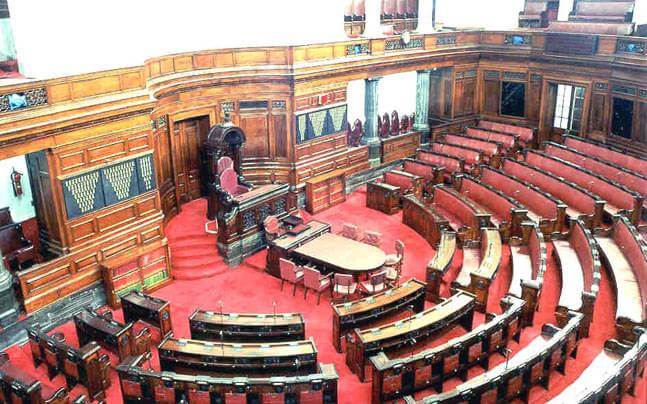Most of us know how elections are conducted in Lok Sabha. But how is a candidate elected to Rajya Sabha? What is the election procedure of the upper house, Rajya Sabha, also known as the Council of States? Procedure for Rajya sabha elections are more complex when compared to Loksabha elections.
Why Rajya Sabha or Council of States?

A single directly elected House was considered inadequate to meet the challenges before free India by the Constituent Assembly. A second chamber, known as the ‘Council of States’, therefore, was created with altogether different composition and method of election from that of the directly elected House of the People. It was meant to be the federal chamber i.e., a House elected by the elected members of Assemblies of the States and two Union Territories in which States were not given equal representation (unlike many other federal countries). Apart from the elected members, provision was also made for the nomination of twelve members to the House by the President.
Composition of Rajya Sabha
Article 80 of the Constitution lays down the maximum strength of Rajya Sabha as 250, out of which 12 members are nominated by the President and 238 are representatives of the States and of the two Union Territories. The present strength of Rajya Sabha, however, is 245, out of which 233 are representatives of the States and Union territories of Delhi and Puducherry and 12 are nominated by the President. The members nominated by the President are persons having special knowledge or practical experience in respect of such matters as literature, science, art and social service.
Allocation of Seats to Rajya Sabha

The Fourth Schedule to the Constitution provides for the allocation of seats to the States and Union Territories in Rajya Sabha. The allocation of seats is made on the basis of the population of each State. Consequent on the reorganization of States and formation of new States, the number of elected seats in the Rajya Sabha allotted to States and Union Territories has changed from time to time since 1952.
Process of Rajya Sabha Election
The representatives of the States and of the Union Territories in the Rajya Sabha are elected by the method of indirect election. The representatives of each State and two Union territories are elected by the elected members of the Legislative Assembly of that State and by the members of the Electoral College for that Union Territory, as the case may be, in accordance with the system of proportional representation by means of the single transferable vote.
Election to Rajya Sabha: Procedure Illustrated with an Example
The Rajya Sabha seat quota for each state is fixed as per Schedule 4 of the constitution. Elections to 1/3 of these seats occur every 2 years. Let’s take an example of a state where there is Rajya Sabha election for 3 seats. Let there be only two parties in the legislative assembly. Party A has 100 seats and party B has 40 seats. Both parties can field three candidates each for the three Rajya sabha seats.
To win a Rajya Sabha seat, a candidate should get a required number of votes. That number (quotient) is found out using the below formula.
Quotient = Total number of votes divided by (Number of Rajya Sabha seats + 1 ) + 1.
In the illustrated case, a candidate requires (140/4)+1, ie. 36 votes to win.
NB: Members don’t vote for each seat. If that had been the case then only the ruling party representatives would make it through. Rather, the members give preferences for each candidate (as 1, 2, 3, 4, 5 and 6). If 36 or more members choose a candidate as their first choice, he gets elected. So the Party B (opposition party in Loksabha assembly) with 40 seats can get one member elected if the members give preference for a candidate as first preference. The ruling party (Party A) on the other hand can get 2 members elected (72 votes from their 100 members).

.jpeg)
No comments:
Post a Comment